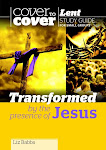We have much to learn from those who have gone before us in the faith and so I thought I'd give you a brief overview of St Patrick.
Saint Patrick (387-461) is the most famous Irishman of all time and yet he wasn’t born in Ireland but at Kilpatrick, near Dumbarton in Scotland. He was the son of a deacon and worked on his father’s farm as a young boy, but at the age of sixteen, he was captured by Irish raiders and sold into slavery in Ireland. He escaped six years later when it is said God appeared to him in a vision and showed him how to escape. Patrick embraced the monastic way of life and became a priest, but God called him back to Ireland and he later became Bishop of Ireland. Many stories have been told of Patrick’s travels across Ireland, preaching and converting people as he went. Irish people all around the world will be celebrating his achievements tomorrow, March 17th, which is said to be the anniversary of his death. This extract from St Patrick’s Declaration gives a wonderful insight into his life:
After coming to Ireland I was put to work tending cattle, sheep and hogs, and many times during that day I would pray. More and more the love of God and the fear of God came to me, so that my faith was strengthened and my spirit moved. In a single day I would pray as often as a hundred times, and nearly as often at night, when I was staying in the woods and the mountains, I would rouse myself before daylight to pray, whether in snow, frost, or rain; it made no difference, and I felt no bad effects. Because the Spirit in me was fervent, I knew no sluggishness. St Patrick
(Quoted from p.26 Celtic Treasure - Liz Babbs)
















